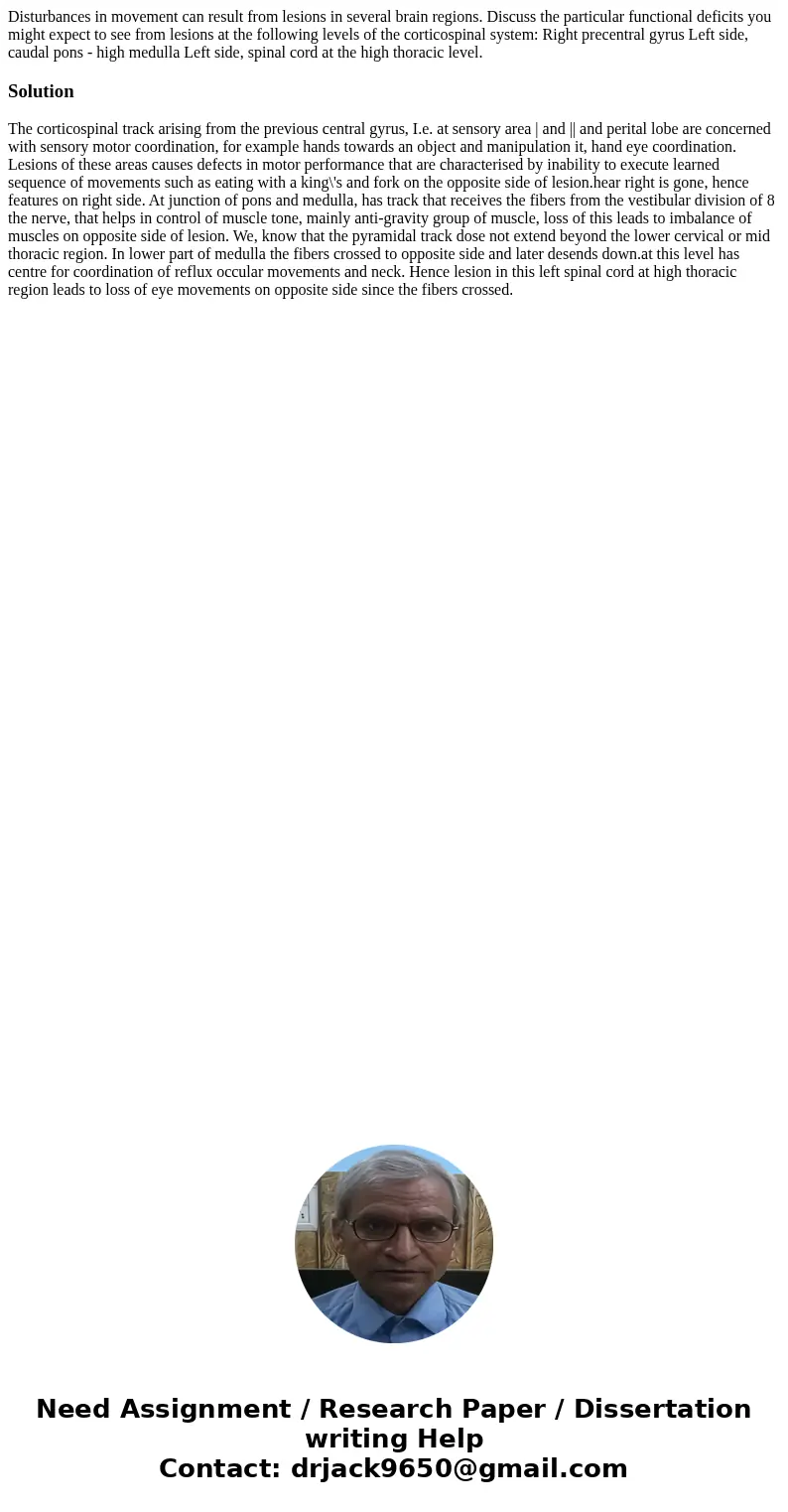Disturbances in movement can result from lesions in several
Disturbances in movement can result from lesions in several brain regions. Discuss the particular functional deficits you might expect to see from lesions at the following levels of the corticospinal system: Right precentral gyrus Left side, caudal pons - high medulla Left side, spinal cord at the high thoracic level.
Solution
The corticospinal track arising from the previous central gyrus, I.e. at sensory area | and || and perital lobe are concerned with sensory motor coordination, for example hands towards an object and manipulation it, hand eye coordination. Lesions of these areas causes defects in motor performance that are characterised by inability to execute learned sequence of movements such as eating with a king\'s and fork on the opposite side of lesion.hear right is gone, hence features on right side. At junction of pons and medulla, has track that receives the fibers from the vestibular division of 8 the nerve, that helps in control of muscle tone, mainly anti-gravity group of muscle, loss of this leads to imbalance of muscles on opposite side of lesion. We, know that the pyramidal track dose not extend beyond the lower cervical or mid thoracic region. In lower part of medulla the fibers crossed to opposite side and later desends down.at this level has centre for coordination of reflux occular movements and neck. Hence lesion in this left spinal cord at high thoracic region leads to loss of eye movements on opposite side since the fibers crossed.
 Homework Sourse
Homework Sourse